White Paper: The Promise of Personalized Learning
Personalized learning has been discussed as a concept for decades, but with the emergence of new teaching strategies and technologies, the next generation of personalized learning is here.
Personalized learning (PL) is an instructional approach that tailors the learning experience to meet the unique needs, abilities, interests, and paces of individual students. It moves away from the traditional one-size-fits-all model of education and instead aims to provide a more customized and flexible learning journey for each student. PL is among the most talked about concepts in K-12 education, and is a key strategy embraced by many schools, districts, and education colleges. Similar to many other terms in education, however, “personalized learning” is often used as a buzzphrase without a solid understanding of key concepts, goals, and implementation strategies. Even more importantly, key elements of the most successful implementations of PL—including student agency tied to the opportunity to choose personalized educational pathways—are often overlooked. This white paper:
- Explains why PL is important, especially now
- Considers the history of PL
- Explores differences between PL and other similar concepts and terms
- Explains why a new, broader generation of PL is now emerging, and how the concept of personalized pathways can be used to meet the needs to a wide range of students
Why Personalized Learning, and Why Now?
Public education is facing both new and ongoing challenges, which require innovative strategies and a re-commitment to serving the needs of all students.
Data from a Gallup poll released in August 2023 demonstrate elements of both success and failure within public education. On the negative side, only 36% of parents say they are satisfied with the quality of U.S. public education overall. More positively, however, 76% of parents say they are “completely” or “somewhat” satisfied with the quality of the education of their oldest child.
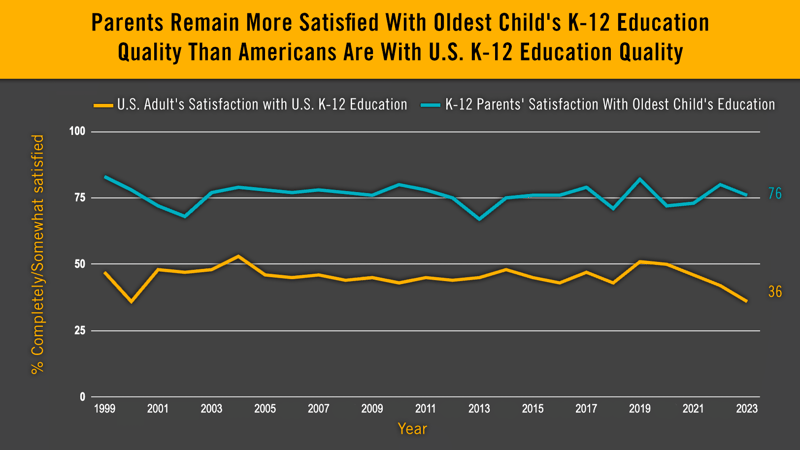
Source: Gallup. (2023, August 31). Education Satisfaction Ties Record Low. Retrieved from https://news.gallup.com/poll/510401/education-satisfaction-ties-record-low.aspx
Gallup paints the 76% of parents satisfied with their child’s education as positive, but should educators and policymakers be complacent when a quarter of parents are dissatisfied with the quality of their child’s school? There is clearly room to do better. In particular, the variation in student achievement among different demographics, and pandemic-related education setbacks, appear to be driving some of the discontent and should be addressed.
There is a need to improve. Fortunately, there is also a way forward, by adapting current technology with student-centered learning that reflects today’s students as digital natives who are sophisticated consumers of digital content and tools.
Implementing that vision successfully requires:
- An understanding of where PL fits among historical trends
- Recognition of the distinctions between PL and differentiated learning
- Strategies for creating an updated, next-generation concept of personalized learning that involved student agency and parent choice at multiple levels
.png?width=1200&height=2118&name=PersonalizedLearningWithinAHistoricalContext%20(1).png)
Personalized Learning vs. Differentiated Instruction
Personalized learning and differentiated learning both focus on tailoring instruction to meet the individual needs of students. While they share similar goals, they have distinct characteristics and implementation strategies.
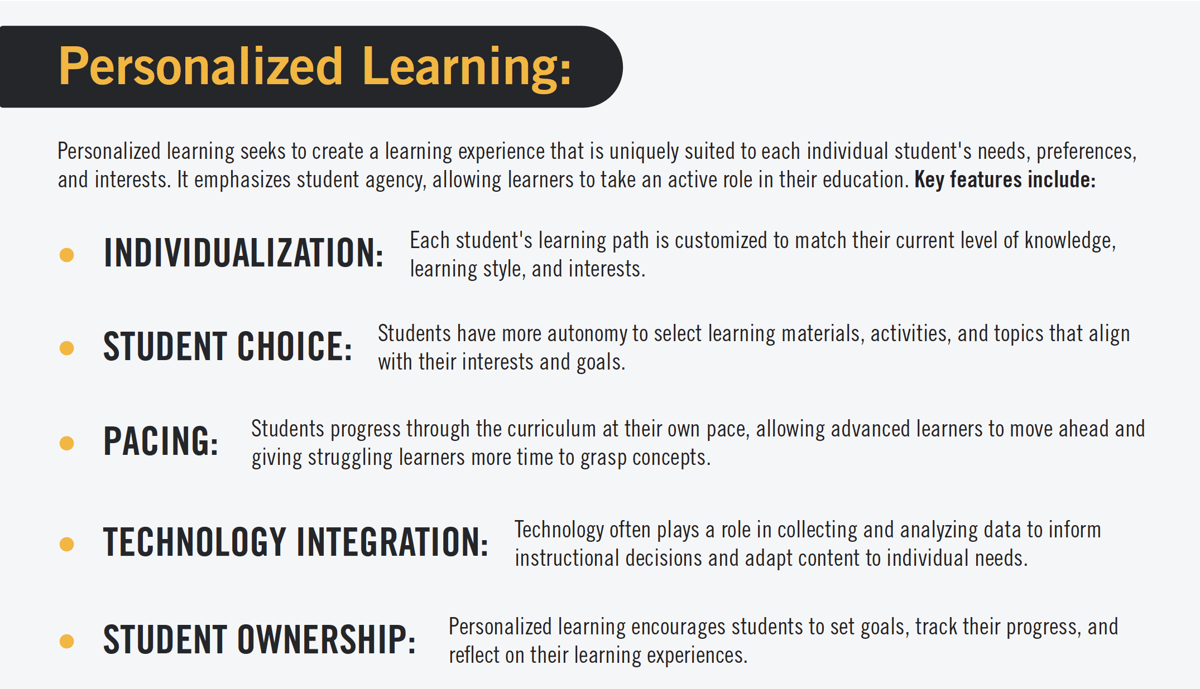
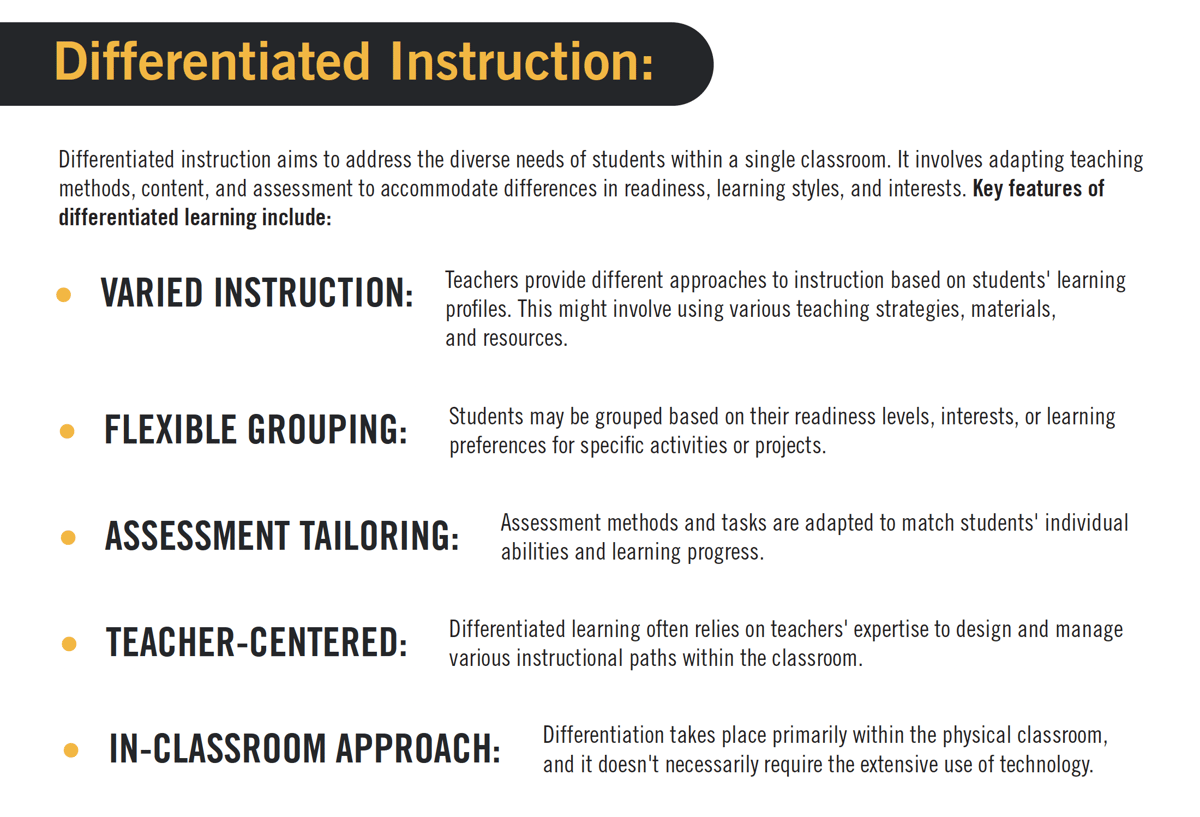
Personalized Learning vs. Differentiated Instruction
Personalized learning and differentiated learning both focus on tailoring instruction to meet the individual needs of students. While they share similar goals, they have distinct characteristics and implementation strategies.
Personalized Learning:
Personalized learning seeks to create a learning experience that is uniquely suited to each individual student's needs, preferences, and interests. It emphasizes student agency, allowing learners to take an active role in their education. Key features include:
- Individualization: Each student's learning path is customized to match their current level of knowledge, learning style, and interests.
- Student Choice: Students have more autonomy to select learning materials, activities, and topics that align with their interests and goals.
- Pacing: Students progress through the curriculum at their own pace, allowing advanced learners to move ahead and giving struggling learners more time to grasp concepts.
- Technology Integration: Technology often plays a role in collecting and analyzing data to inform instructional decisions and adapt content to individual needs.
- Student Ownership: Personalized learning encourages students to set goals, track their progress, and reflect on their learning experiences.
Differentiated Instruction
Differentiated instruction aims to address the diverse needs of students within a single classroom. It involves adapting teaching methods, content, and assessment to accommodate differences in readiness, learning styles, and interests. Key features of differentiated learning include:
- Varied Instruction: Teachers provide different approaches to instruction based on students' learning profiles. This might involve using various teaching strategies, materials, and resources.
- Flexible Grouping: Students may be grouped based on their readiness levels, interests, or learning preferences for specific activities or projects.
- Assessment Tailoring: Assessment methods and tasks are adapted to match students' individual abilities and learning progress.
- Teacher-Centered: Differentiated learning often relies on teachers' expertise to design and manage various instructional paths within the classroom.
- In-Classroom Approach: Differentiation takes place primarily within the physical classroom, and it doesn't necessarily require the extensive use of technology.
Other terms that are often compared with or can be key components of PL include:
- Individualized Learning: focuses on creating a unique learning path for each student, often with the use of technology and data-driven insights.
- Adaptive Learning: Adaptive learning systems use technology and algorithms to adjust the difficulty and content of educational materials based on a student's progress and performance.
- Competency-Based Learning/Mastery Learning: Students progress through their learning at their own pace, mastering by demonstrating a deep understanding of specific skills or competencies before moving on to the next level or topic.
- Student-Centered Learning: Student-centered learning shifts the focus from the teacher to the student, emphasizing active participation, collaboration, and autonomy in the learning process.
- Self-Directed Learning: Self-directed learning places the responsibility for learning on the student, who sets goals, selects resources, and manages their own learning journey.
- Universal Design for Learning (UDL): UDL is an approach that aims to create flexible learning environments and materials that can be customized to meet the needs of all students, including those with disabilities.
- Individualization: Each student's learning path is customized to match their current level of knowledge, learning style, and interests.
In summary, personalized learning focuses on providing a highly individualized and student-driven educational experience, often leveraging technology to tailor content and pacing. Differentiated learning and other forms of individualized learning, on the other hand, aim to adapt instruction to accommodate diverse needs within a classroom setting, emphasizing teacher-led modifications based on student characteristics. While these approaches aim to enhance learning outcomes by catering to individual students, they vary in their scope, implementation, and reliance on technology.
Key Aspects of Personalized Learning
While personalized learning and differentiated instruction share the common goal of catering to individual student needs, it's essential to delve into the key aspects that distinguish these approaches. These aspects provide a deeper understanding of how personalized learning operates and why it is gaining traction in education. By examining the elements that constitute personalized learning, we can better appreciate the nuances that set it apart from other forms of individualized instruction. Below the key aspects of PL are described to help gain insights into how personalized learning can transform the educational landscape.
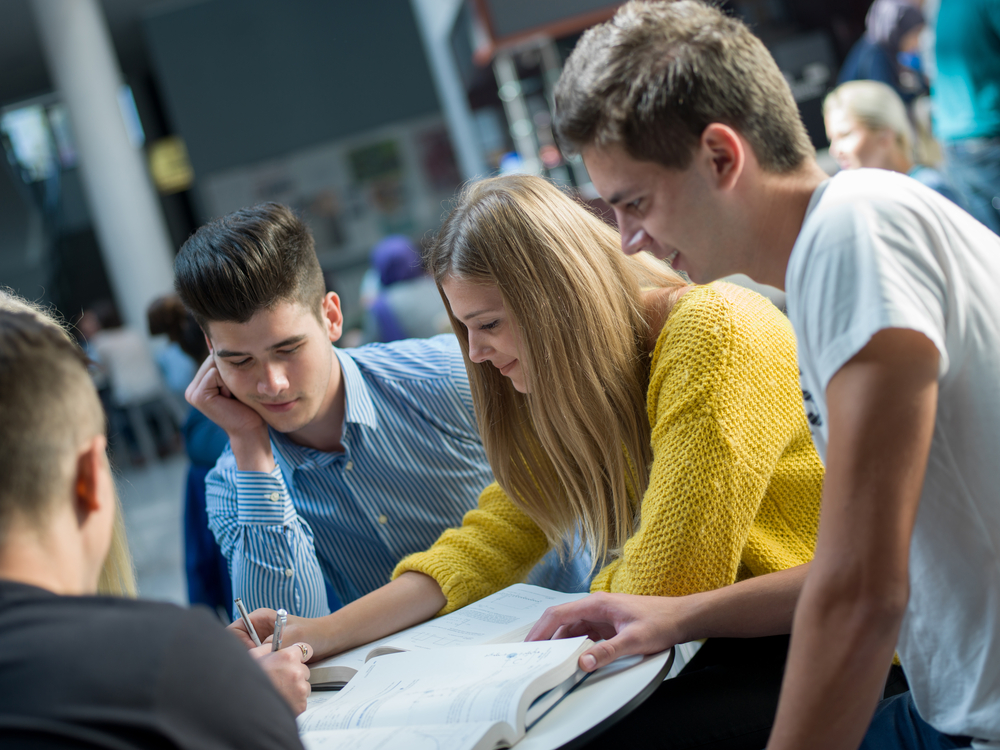
- Customization: Educational content, activities, and assessments are adjusted based on the learner's interests, abilities, and progress. This ensures that the learner is challenged appropriately and can engage with the material in a meaningful way.
- Individual Pace: Learners are allowed to progress through the material at their own pace. This means that advanced students can move ahead more quickly, while those who need more time can take the necessary time to grasp concepts.
- Data and Analytics: Technology often plays a significant role in personalized learning by collecting data on students' performance and progress. This data is then used to make informed decisions about how to tailor the learning experience further.
- Choice and Autonomy: Learners are given some degree of control over their learning path, allowing them to choose topics of interest, projects, or activities that align with their passions.
- Feedback and Assessment: Regular feedback and assessments are provided to help learners understand their strengths and areas for improvement. This information can guide them in making decisions about what to focus on next.
- Teacher Role: In a personalized learning environment, teachers act more as facilitators and guides rather than traditional instructors. They provide support, guidance, and resources to help learners navigate their individualized learning paths.
- Collaborative Learning: Collaboration and peer interaction are often encouraged, allowing students to learn from each other and share their perspectives and insights.
Personalized learning can take various forms, from traditional classrooms with differentiated instruction to online platforms and adaptive learning technologies. The goal is to create a more engaging and effective learning experience by catering to the unique needs and preferences of each learner, ultimately enhancing their overall educational outcomes.
Next-Generation Personalized Learning: Personalized Learning Pathways
The key aspects of PL—and the key elements differentiating PL from differentiated instruction—revolve around student agency, ownership, and choice. And yet, many educators’ views of agency and ownership remain limited, focused on issues such as the student choosing a science lab topic, or a book, to meet the student’s preferred interests.
What if, instead, the student was able to choose their pursuits of interest, combine internships with school, take college-level courses, and determine their own daily and weekly schedule?
Personalized pathways are one of the most important aspects of personalized learning, and they already exist in schools across many states. Districts are creating online schools and hybrid schools, which combine online and onsite instruction. They are also using online courses within traditional, physical schools, to offer additional course options for students and to provide scheduling flexibility. In these cases, students choose their own educational path with the help of a teacher and/or counselor, often combining their educational goals with other interests; they combine their academic, career, and life goals.
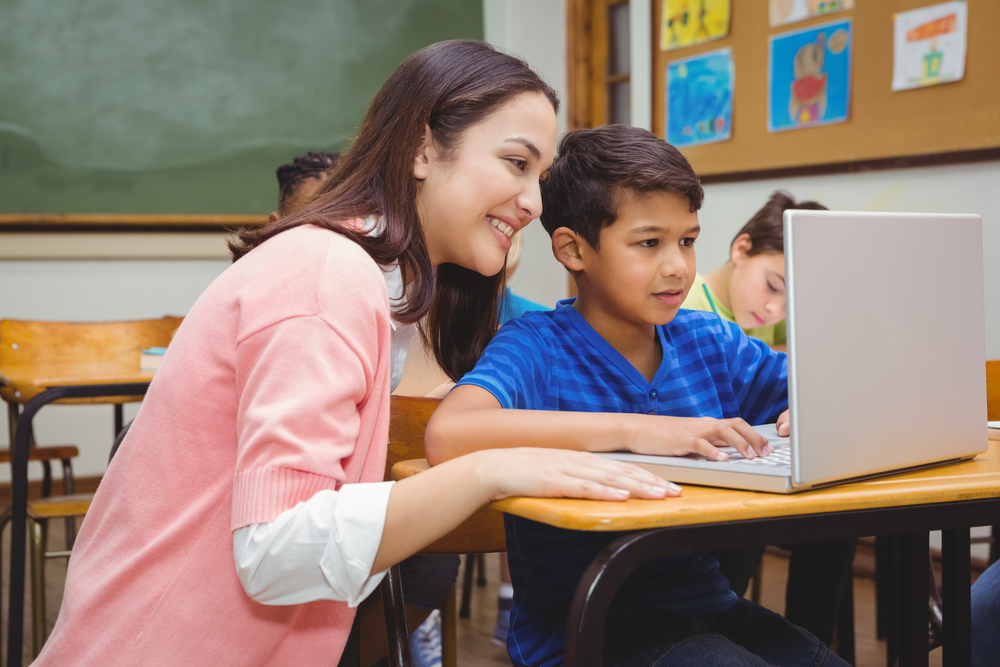
Examples of schools providing PL Pathways (which often include some other elements of personalized learning as well) include:
- At Crossroads FLEX in North Carolina, each student selects a “pursuit”—an area of interest that is then supported by the student’s academic schedule. Students focus on their pursuits, often outside of school, using the school’s flexible scheduling to allow them time for their pursuits.
- Oasis High School in California is located on a community college campus. Many students take multiple college courses, with some even graduating high school with an Associate’s college degree. Other students focus on jobs or internships.
- PXU City, a school within the Phoenix Union High School District in Arizona, allows students to build their own high school. They can choose from 500 classes (both in online and in-person formats), experience internships, take college courses, enroll in career programs, and have other options based on each of the district’s individual school offerings and opportunities within the community.
- Poudre Global Academy in Colorado offers a hybrid schedule in which students go to the physical school on a regular schedule for two days a week while learning from home on the other dates. Unlike some other hybrid schools which serve only high school students, PGA works with students in grades K-12.
- Virtual Arkansas is a state program that provides online and hybrid career-oriented courses to students in public school districts across the state, allowing those students to explore a variety of career paths.
- Valor Preparatory Academy of Arizona operates on a hybrid learning model that is focused on student and family ownership of learning, as explained by Principal Dan Mahlandt, “We empower students and parents to make decisions for themselves on the education they want, and we don’t make time the constant, instead focusing on actual learning. With this model, we can change education and make sure that what the students need drives us.”
These schools rarely look like a traditional learning environment, with neatly arranged desks and chairs. Instead, the look more like a library, or a tech start-up. Students mix working from home, from school, and from other locations. They explore jobs, internships, and interests such as arts or sports. They also take control of their academic trajectories while working closely with teachers, mentors, and counselors from their schools.
This is what the core of Personalized Pathways looks like in action.
Keys to Success in Personalized Learning
Regardless of the type of school, several factors are critical to success. These include:
- High-quality digital curriculum and assessment — Student ownership of learning is made possible by offering a range of high-quality courses and content. A diverse range of learning resources, materials, and activities cater to different learning preferences. A mix of digital and traditional resources engages students and provides flexibility. Teachers and adaptive learning platforms adjust content, pacing, and difficulty based on student performance and learning trajectories. Technology can help automate certain aspects of personalization and provide real-time feedback while supplying teachers with the data they need to truly understand their students. Finally, excellent teachers and curriculum blend in-classroom and online experiences to accommodate various student interests and preferences.
- Professional development for teachers — Teachers play a central role in implementing personalized learning, but a teacher trained in traditional teaching methods can’t be expected to shift into a new teaching modality without extensive support. Schools or districts should provide comprehensive training on personalized learning strategies, instructional technology tools, data analysis, and differentiated instruction. Ongoing professional development and support are crucial to ensure teachers feel confident and capable in their roles.
- Data for all — As mentioned above, one benefit of online content and platforms is in the data that teachers can use to understand their students. But data can be used by others as well. Students can quickly rate their understanding of difficult topics or change their pathway based on the data they receive. School leaders and caregivers can also have a view into the progress being made by individual students or entire classes. This information can be used to adapt learning pathways, provide timely interventions, and tailor instruction to individual needs.
- Addressing the whole student through mental health (SEL) supports — Even in a technology-rich environment, addressing the whole student is critical. Teachers report that they know their students in online and hybrid schools better than they did in traditional schools, which is a good start. Schools focused on next-generation PL recognize that students do better academically when they are fully healthy both physically, mentally, and emotionally. Schools that support the full range of social and emotional learning help their students become better learners.
StrongMind keeps students at the center of learning. We don’t believe in a one-size-fits-all solution. We believe students should have choice and autonomy in their education, and the opportunity to learn at their own pace. StrongMind supports personalized learning with high-quality K-12 digital courses, SEL, implementation and training support, and meaningful data to keep all stakeholders informed. StrongMind provides students with opportunities to collaborate and drive their learning, and we equip teachers with the tools they need to thrive.
